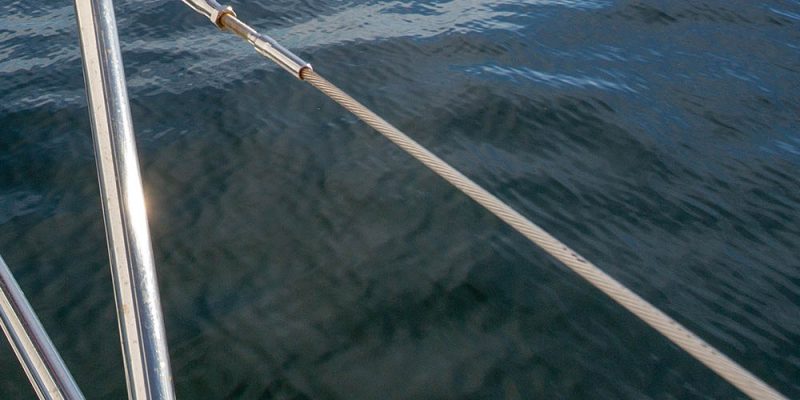
Friday’s Marvelous and Mysterious Maritime Memories: When Lifelines Fail
Latitude 38 editor John Riise loves delving into maritime history. Here we share a couple of stories he found about sailors who fell off their vessels due to a lifeline failure.
Early one morning during the 1951 Transpac, about 800 miles from Honolulu, 40-year-old Ted Sierks fell overboard off the 73-ft sloop L’Apache when a lifeline broke. The crew threw a life ring he was able to grab, but by the time they got the spinnaker down and the boat turned around, he was nowhere to be seen. The ensuing search included not only a number of yachts in the race that diverted to help, but a Navy aircraft carrier, four destroyers, three destroyer escorts, and a B-17 bomber dispatched from Hickam Field. (At the time it was said to be the largest peacetime search since that for Amelia Earhart in 1937.) No one could find him. Some 30 hours later, just before the search was due to be called off, sharp eyes on the destroyer USS Douglas Munro spotted a blond head. Sierks, who had been in the water for 30 hours and 15 minutes, later said he had seen boats and ships all around him all day, but none came near enough to see him before the Munro.

In 1993, 68-year-old singlehander Bill Forrest was headed south off Costa Rica aboard his Capo 30 California Girl. It was a hot, windless day. The boat was under power and an autopilot was steering. To cool off, Bill stripped off his shorts for a bucket shower. As he leaned over to get the first bucketful, the lifeline parted and he went into the water. By the time he came up, the boat was already past him. He grabbed for the trolling line but couldn’t get a firm grip. He decided to let go just as the big, three-barb lure hook embedded itself in his hand. He fought for several minutes before the line broke. Then, treading water, he watched his boat motor over the horizon. Bill ended up swimming 12 miles to the rocky shore. After a day watching recue planes and ships zooming around offshore — with none thinking to look onshore — he decided that he was going to have to save himself. He spent the next week swimming south from small cove to large beach to small cove — eating almost nothing and sleeping little — before he was finally found. Meanwhile, California Girl had struck rocks near his destination harbor, been salvaged, and was on the hard in a boatyard. Before he returned home, Bill went to see her and look at the lifeline, which had just been replaced. He found that the lifeline itself was fine. But, as evidenced by other lifelines on the boat, whoever did the job did not fully engage the circlip that holds the pin in the clevis. So it had worked its way out, causing the pin to fall out, causing the lifeline to “fail.” Read the complete story in our June 1993 issue here.
Remember to check your lifelines before you head out next!

I don’t use lifelines. My first sailboat when I was in my twenties was a wooden 1958 Kingscruiser that never had them. After a thirty year hiatus from sailing, a 2012 BajaHaha trip on a friend’s 42 foot cutter renewed my affections and I bought a 1966 Columbia Mark2 and quickly removed the lifelines. Five years later I sold her and bought my current(and hopefully last) sailboat a 1966 wooden H-28 modified ketch. I removed the pulpits and lifelines. I didn’t even know about lifelines in my twenties, when you’re immortal, but I do know now what tethering is and I use it. Funny, I don’t know where my disliking for lifelines stems from, but as we docked after the 2012 Baja, my friend slipped and fell, his weight taking him through the lifeline and onto the dock. Fortunately no serious injury.
Granted, tethering is a pain, especially when none of the halyards run back to to the cockpit, the sheets often seem to find a way to foul themselves, and all the sails are hanked.
But the wooden boats just look more traditional and classy!
ISAF tethers work quite well, as anyone who has done an offshore class has noted.
Apparently, single-hander Bill Forrest never read “One Hand For Yourself, And One Hand For The Ship” by Tristan Jones, who spent much of his adult life Sailing small boats offshore single handed. His advice: when sailing single-handed using self-steering, tow a steering trip-line of at least one hundred feet which you MIGHT be able to grab as the boat sails away from you if you fall overboard. I don’t recall if he said he ever had occasion to use it or not – but I do recall his saying that he NEVER wore a PFD when sailing offshore, seeing no logic in prolonging the agony of death at sea.